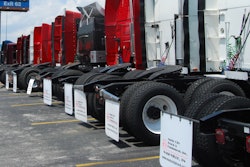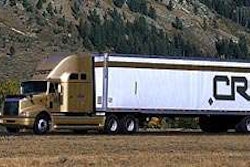 Though the hours-of-service regulation changes that went into effect July 1 could reduce capacity and increase freight rates, these perceived benefits may not affect the industry equally.
Though the hours-of-service regulation changes that went into effect July 1 could reduce capacity and increase freight rates, these perceived benefits may not affect the industry equally.Truckers seem, by nature, to be cautious and skeptical. “We are in a bubble. Give it a couple of months, and it will pop,” said one member of the Randall-Reilly MarketPulse panel of senior for-hire executives back in March. Said another in May, “Our business has spiked upward, but we are still cautious and will remain so.”
The American Trucking Associations’ truck tonnage index has hit all-time highs this year, exceeding the December 2011 previous high. Cause for celebration and optimism? Not so fast. First, past results do not indicate future performance, of course. Also, the rising tide hasn’t lifted all boats – at least not to the same level.
ATA Chief Economist Bob Costello points out that the growth in tonnage continues to outpace that in loads. That’s not too surprising when you consider strength in housing construction materials and in sand and water for hydraulic fracturing, he notes. Speaking in May at CCJ’s Spring Symposium in Birmingham, Ala., Costello noted that loads were up year over year in the first quarter of 2013 for all segments except dry van, which was down 3.5 percent.
But van versus flatbed and tank isn’t the only split between the haves and the have-nots. Smaller carriers don’t seem to be faring as well as larger ones. Loads for small truckload carriers – under ATA’s definition, those with less than $30 million in annual revenue – were down 13.4 percent in the first quarter, Costello says. Capacity – the number of tractors for both company and independent contractor trucks – for smaller carriers remains 8.3 percent lower than at the beginning of the recession in December 2007. Capacity at large truckload carriers is still down as well, but only by 5 percent.
With financing hard to find, you would think that what growth smaller carriers are seeing would come mostly from owner-operators. Not so, Costello says. According to ATA, large truckload carriers have increased their total driver count – company and owner-operator equipment – by about 0.4 percent since the beginning of 2012, reflecting a 0.5 percent increase in company drivers and a 0.2 percent decrease in independent contractor drivers. Smaller carriers increased their driver force 0.1 percent, but the number of company drivers was up 6.5 percent, while the number of independent contractor drivers was down 6.3 percent. Costello believes that small carriers can’t offer the kinds of assistance – truck financing, for example – that larger carriers can, allowing the larger carriers to steal their owner-operators.
And then there are the hours-of-service regulations. In a recent MarketPulse survey, concerns over regulation surged among smaller carriers. There clearly are some perceived benefits, such as higher freight rates due to an anticipated reduction in effective capacity. Said one executive at a carrier with more than 100 trucks.
The hours-of-service regulations may very well turn out to be a pricing boon for the trucking industry, but the benefits won’t be distributed equally.
“The freight market just continues to take two steps forward, one step back,” said another executive at a larger carrier. “Feeling very much like it could be a long slow death to mid-sized and smaller carriers trying to cover lack of drivers and increased costs across the board (mostly due to regulations).”
“New hours of service, Obamacare … when will we catch a break?” asked one executive at a small trucking company. Said another, “With more regulations coming down the pike, I’m seriously looking at short-term solutions to get out of transportation.”










